Another day out on Malabar Headland to photograph the nesting Peregrine Falcons. I had been out only 4 days earlier, but this day had been quite wet and very cold. I was hoping for better conditions this time.

As it turned out, it was a bit wet again, and like the previous visit, I did sit out some showers by sheltering in the sandstone overhangs on the clifftops. But, unlike my last trip, the Peregrine Falcons were a lot more active. Just before I left, I witnessed an amazing display of flying by one of them.
Like the last trip, I entered the park via the track from Malabar. On the way in, I photographed some of the New Holland Honeyeaters.

And I saw a Rufous Whistler. Unfortunately it did not come out of the thicket.

Near Boora Point, not long after I arrived at 8:30 am, I spotted what I had come to see. One of the Peregrine Falcons.

I had watched one earlier, perched on the cliffs, but all of sudden it had taken off and flower way out to sea. I don’t know if it was the one I had photographed above or its mate. It flew in to land on the cliffs.


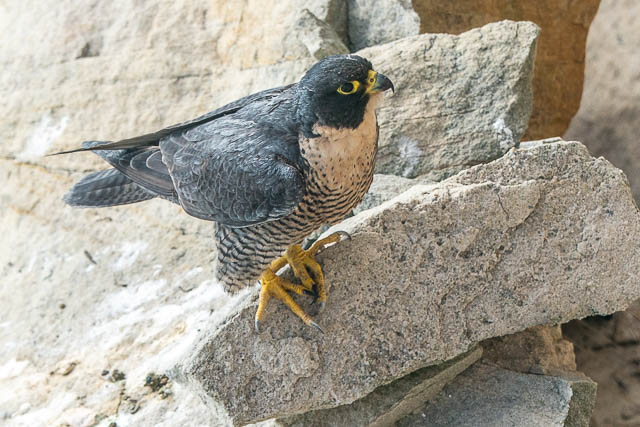
A second Peregrine Falcon arrived and this one took off to join it on a ledge out of sight.

Then I saw one fly off towards Boora Point. I went out that way and saw it perched on the top of the cliffs. I slowly made my way closer.

I waited patiently to see if it would take off. It gave a few signs that it would – stretching its wings.



But then it settled back down. I turned my camera towards a pod of passing whales.
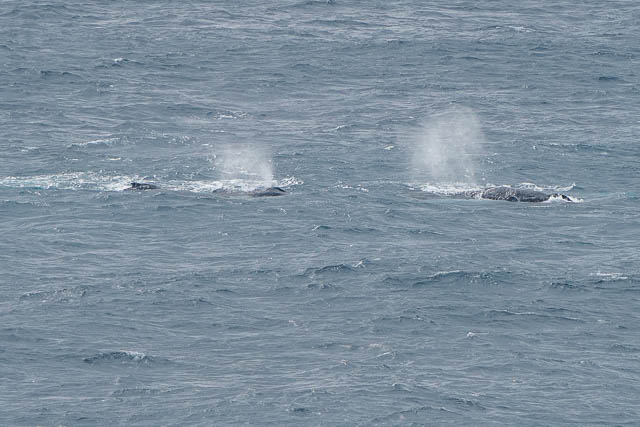

The the Peregrine Falcon gave another sign that it was about to take-off.

It did! It took off towards me, into the wind.







I then lost sight of it, so I headed back to the nesting area. It looked like storm was approaching.


The storm did come, but did not amount to much – a little rain and some wind. I was fine in a cave.
Here is a Great Cormorant –

Then I spotted a Peregrine Falcon.



This Peregrine falcon stayed on this perch, and I spotted another on a nearby ledge. It had some prey, what looks like a Noisy Miner. It was pulling off feathers and looked like it was preparing it to feed young.





It then took the prepared food over to the nest.






For long while, one of the Falcons was always perched in sight near the nest.




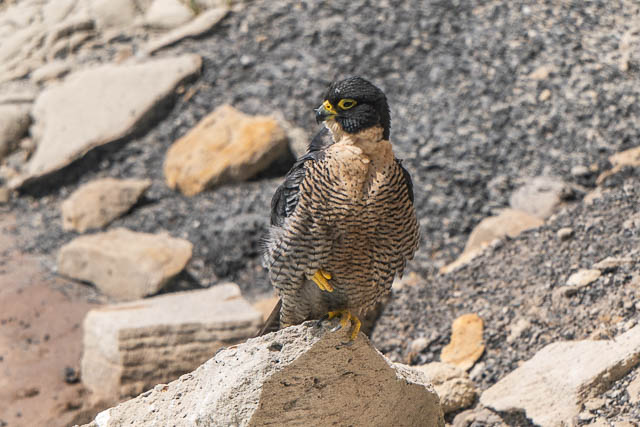

I had my lunch and when I had finished I notched the guard Falcon had left its perch. I scanned the cliffs nearby and at Boora Point to see if I could spot one. No luck. But there are ledges that you cannot see from the clifftop, and I thought it was likely that one was still close to the nest.
It wa a bit quieter now. Time to photograph a butterfly –

Near the nest area, I had previously seen some very old Aboriginal sharpening grooves. I had read that Aboriginal Art had earlier been recorded on Malabar Headland but that recent searches had failed to find it. I had looked on some of the rock platforms for signs of engravings without seeing anything. This time, I wondered whether this is old faded art?

Roscoe, the bird photographer I had met the previous Monday out on the headland then arrived. I filled him in with what the Peregrines had been doing. I then left him at the nest area, and headed to Boora Point. I looked along the cliffs but no signs of a Falcon.
Then I thought I could hear one calling. I looked around as saw a passing Gannet. That didn’t look like it had made the call.

Then all of a sudden a Peregrine Falcon appeared. What followed was an amazing display of flying. Most of my remaining photos were taken in a 12 minute interval being at 1:55 pm. The Falcon was flying very fast, in long sweeps up and down the cliffs between the two points at Boora Head. It would fly up, turn and then dive down again, below the cliffs to the far point, then again turn and repeat this a few times. Then it would land on the cliffs for a short rest, then repeat the same zooming flights.

















When it was flying, it was very fast and quite difficult to track with the camera and long lens. I missed far more photos than I captured. I was glad the bird took some time out to rest. This allowed me to rest also, get my breath back and allows the camera buffer to write to the memory card.



It also allowed me to get some more take-off sequences.







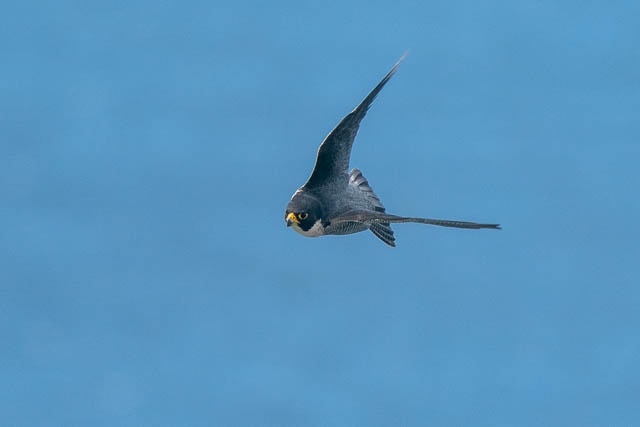





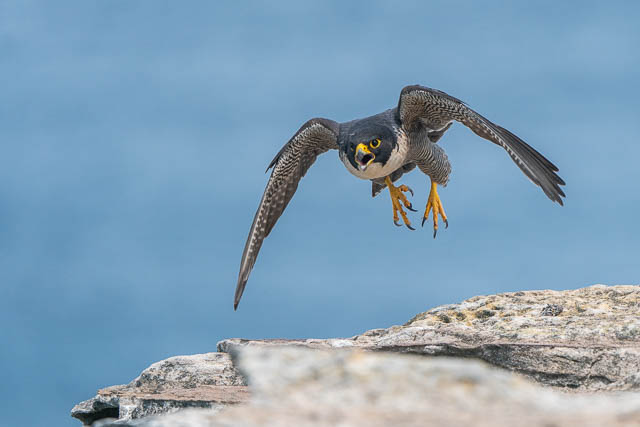





















I saw the Peregrine Falcon perch on this point. I walked closer, but by that time it had gone, and I didn’t see where it had flown to.
I then walked back to the nest area to see if it had gone there. Roscose was still there and said that it hadn’t. So we then both walked back to Boora Point.
On the way, Roscoe spotted this small Cunningham’s Skink.

There was no sign of the Peregrine Falcon at the point.
We discussed what could have made the Peregrine falcon put on the flying display that I had seen. I thought at first it was flying really fast and calling out loudly in order to scare out some of the nesting Starlings. They nest on small leaves near the point. Perhaps the nest are on ledges too tight for the Falcon to get to? But during all the swoops, I didn’t see any Starlings suddenly flee their ledges. So my nest thought was that the Peregrine falcon was flying like that for the sheer joy of flying.
But then I spotted another possible reason. Deep in a cave, I spotted another bird. It was a long way off and perched deep in the far recess of the cave. I thought at first it could be the Peregrine Falcon or perhaps a juvenile Peregrine Falcon. But zooming in on a photo, I think it is a roosting Boobook Owl.

Perhaps the Peregrine Falcon was trying to encourage the owl to move away from its nest area?
I then went back to the nest area and I spotted one of the falcons fly past low down. Roscoe stayed at the point and did see a brief repeat of the Peregrine Falcon swooping display.
It was time for me to head off, so I walked back via the old munitions railway.


This had been an amazing day for bird photography. Thanks also to Roscoe for a lift back to the bus stop.
